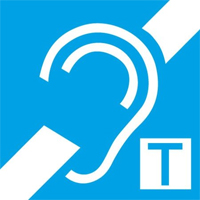Induction Loop System Guide
 There are around 2 million people in the UK who have hearing aids that will work with induction loop audio systems. Since the Disability and Discrimination act in 1995 it is unlawful for service providers to discriminate against people by providing them with a lower standard of service, or service on worse terms for reasons relating to their disability.
There are around 2 million people in the UK who have hearing aids that will work with induction loop audio systems. Since the Disability and Discrimination act in 1995 it is unlawful for service providers to discriminate against people by providing them with a lower standard of service, or service on worse terms for reasons relating to their disability.
Induction loop systems work by transmitting audio signals using a magnetic field. This is achieved by installing a loop of wire around the perimeter of the area to be served. A small coil in suitable hearing aids (ones marked with a “T” can then pick up the signal and convert it to a suitable level for the listener. The loop itself usually consists of one or two turns of wire run around the perimeter of a room, ideally at the height of the listener’s head. For a church, when people are often sitting down about metre would be correct. For museums or other places where people tend to be standing most of the time 1.5 metres would be more suitable. This said, reasonable results can often be obtained at skirting level, depending on the area to be covered. The system should be set so that when listeners switch from normal operation to the “T” position on their hearing aid, there should be little difference between the loop system and someone speaking normally. Always enlist the help of someone with a suitable hearing aid, since they will be using the system. There is a short table below indicating the size of wire required for different loop lengths. Using wire that's incorrect will reduce the efficiency